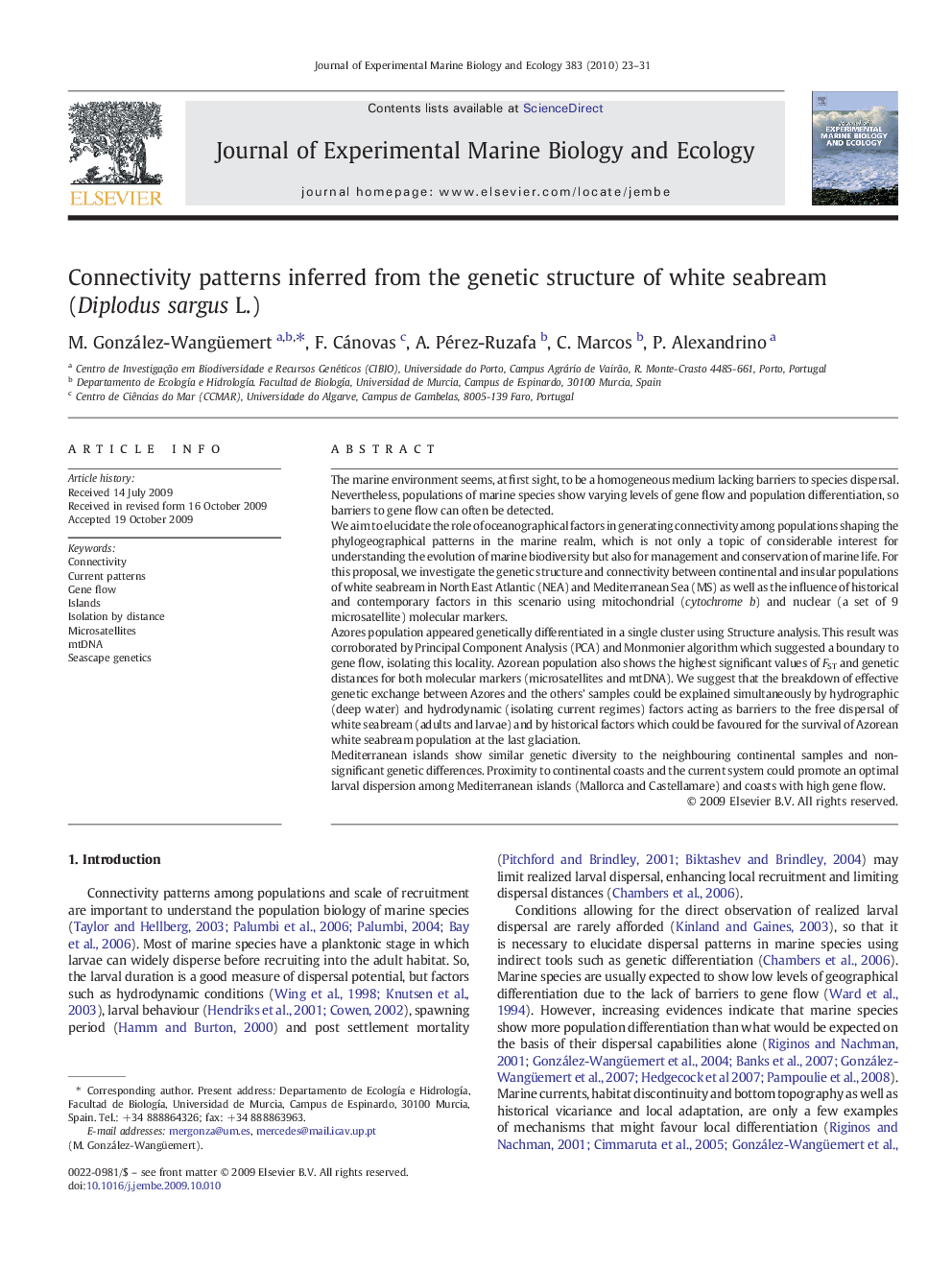| کد مقاله | کد نشریه | سال انتشار | مقاله انگلیسی | نسخه تمام متن |
|---|---|---|---|---|
| 4396815 | 1305844 | 2010 | 9 صفحه PDF | دانلود رایگان |

The marine environment seems, at first sight, to be a homogeneous medium lacking barriers to species dispersal. Nevertheless, populations of marine species show varying levels of gene flow and population differentiation, so barriers to gene flow can often be detected.We aim to elucidate the role of oceanographical factors in generating connectivity among populations shaping the phylogeographical patterns in the marine realm, which is not only a topic of considerable interest for understanding the evolution of marine biodiversity but also for management and conservation of marine life. For this proposal, we investigate the genetic structure and connectivity between continental and insular populations of white seabream in North East Atlantic (NEA) and Mediterranean Sea (MS) as well as the influence of historical and contemporary factors in this scenario using mitochondrial (cytochrome b) and nuclear (a set of 9 microsatellite) molecular markers.Azores population appeared genetically differentiated in a single cluster using Structure analysis. This result was corroborated by Principal Component Analysis (PCA) and Monmonier algorithm which suggested a boundary to gene flow, isolating this locality. Azorean population also shows the highest significant values of FST and genetic distances for both molecular markers (microsatellites and mtDNA). We suggest that the breakdown of effective genetic exchange between Azores and the others' samples could be explained simultaneously by hydrographic (deep water) and hydrodynamic (isolating current regimes) factors acting as barriers to the free dispersal of white seabream (adults and larvae) and by historical factors which could be favoured for the survival of Azorean white seabream population at the last glaciation.Mediterranean islands show similar genetic diversity to the neighbouring continental samples and non-significant genetic differences. Proximity to continental coasts and the current system could promote an optimal larval dispersion among Mediterranean islands (Mallorca and Castellamare) and coasts with high gene flow.
Journal: Journal of Experimental Marine Biology and Ecology - Volume 383, Issue 1, 31 January 2010, Pages 23–31